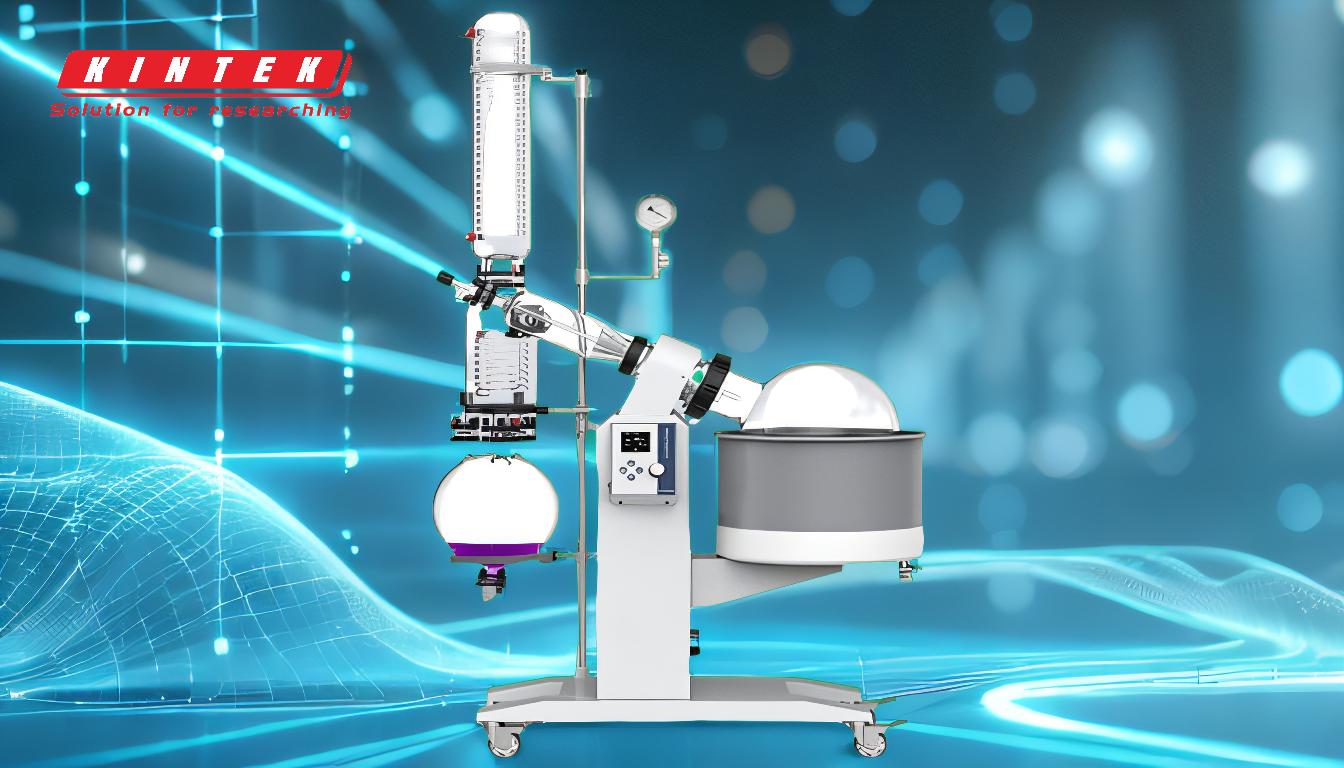Rotovap bumping, a common issue during rotary evaporation, can be effectively prevented through a combination of careful monitoring, proper equipment setup, and the use of additives. Key strategies include controlling temperature and vacuum levels, ensuring the sample volume does not exceed half the flask's capacity, and using boiling chips or capillary tubes to create nucleation sites. Additionally, specialized traps, condenser arrays, and stirring mechanisms can further mitigate bumping. These methods collectively ensure a smoother evaporation process, reducing the risk of sudden boiling and sample loss.
Key Points Explained:

-
Control Temperature and Vacuum Levels:
- Explanation: Bumping often occurs due to rapid boiling caused by sudden changes in temperature or vacuum. Gradually increasing both temperature and vacuum levels allows for a more controlled evaporation process.
- Implementation: Use the rotovap's controls to incrementally adjust settings, avoiding abrupt changes that could lead to bumping.
-
Sample Volume Management:
- Explanation: Keeping the sample volume below half the flask's capacity ensures sufficient surface area for evaporation, reducing the likelihood of rapid boiling.
- Implementation: Always measure the sample volume and select a flask size that accommodates this guideline.
-
Use of Boiling Chips:
- Explanation: Boiling chips provide nucleation sites that promote even boiling, reducing the risk of bumping. However, they may become less effective over time as their pores fill with solvent.
- Implementation: Add one or two boiling chips to the flask before starting the evaporation process. Replace them if the liquid is cooled and re-heated.
-
Sealed Capillary Tubes:
- Explanation: Similar to boiling chips, sealed capillary tubes introduce nucleation sites, helping to control boiling. They can be easily removed after use.
- Implementation: Place a sealed capillary tube in the boiling solution to provide a consistent nucleation site.
-
Stirring Mechanisms:
- Explanation: Stirring creates a vortex that breaks up large bubbles and promotes uniform boiling, reducing the chances of bumping.
- Implementation: Use a magnetic stirrer or other stirring device to maintain constant agitation during the evaporation process.
-
Specialized Traps and Condenser Arrays:
- Explanation: These devices help manage difficult sample types by providing additional cooling and trapping mechanisms, preventing bumping.
- Implementation: Install appropriate traps and condenser arrays based on the sample's properties and the evaporation requirements.
-
Homogeneous Phase Introduction:
- Explanation: Ensuring a homogeneous phase in the evaporation process helps maintain a consistent evaporation rate, reducing the risk of bumping.
- Implementation: Mix the sample thoroughly before starting the evaporation and monitor the process to maintain homogeneity.
By following these strategies, users can effectively prevent rotovap bumping, ensuring a safer and more efficient rotary evaporation process. Each method addresses different aspects of the evaporation process, and combining them provides a comprehensive approach to mitigating bumping risks.
Summary Table:
| Strategy | Explanation | Implementation |
|---|---|---|
| Control Temperature and Vacuum | Bumping occurs due to rapid boiling from sudden changes. Gradual adjustments help. | Incrementally adjust rotovap settings to avoid abrupt changes. |
| Sample Volume Management | Keep sample volume below half the flask's capacity to reduce rapid boiling. | Measure sample volume and select an appropriately sized flask. |
| Use of Boiling Chips | Provides nucleation sites for even boiling, reducing bumping risks. | Add 1-2 boiling chips to the flask; replace if reused. |
| Sealed Capillary Tubes | Introduces nucleation sites to control boiling. | Place a sealed capillary tube in the boiling solution. |
| Stirring Mechanisms | Creates a vortex for uniform boiling, reducing bumping. | Use a magnetic stirrer or similar device for constant agitation. |
| Specialized Traps and Condensers | Manages difficult samples with additional cooling and trapping mechanisms. | Install traps and condensers based on sample properties and evaporation needs. |
| Homogeneous Phase Introduction | Ensures consistent evaporation rates, reducing bumping risks. | Mix samples thoroughly and monitor for homogeneity during evaporation. |
Need help optimizing your rotary evaporation process? Contact our experts today for tailored solutions!














